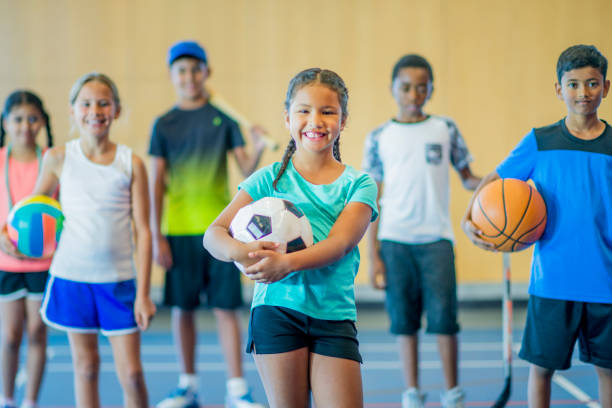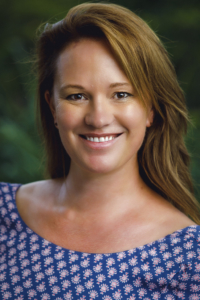News and Media

Championing change for the wellbeing of young people through regular physical activity By Kym Hunter
Australian school students are facing a mental health crisis – research is increasingly revealing worryingly high levels of poor mental wellbeing among our youth. In fact, a report by Mission Australia and the Black Dog institute revealed that in 2018, 24.2% of students experienced mental distress – an increase of 5.5% in seven years (Mission Australia, 2019). Unfortunately, the onset of a global pandemic is predicted to further destabilise student wellbeing. Leading expert in Australian youth mental health Patrick McGorry said that the COVID-19 crisis is a “shadow pandemic” with “a risk of scarring a whole generation” (Clun, 2020).
While the full future effect of the pandemic on youth mental health may be impossible to predict, one thing is glaringly obvious – we= need to address the mental health crisis amongst Australian students before it is too late. It’s incredibly important that in doing so, we take a holistic approach which equips our youth with lifelong skills to manage their mental wellbeing.
When measuring health, it’s important to take an approach that considers multiple facets of wellbeing. The World Health Organisation suggests that such a measurement should be based on quality of life – an index which is the summation of the physical, mental and social wellbeing of a person (World Health Organisation, 2006). My particular passion, and indeed the foundation for my social enterprise Champion Life, is the positive relationship between physical activity and mental health.
While it is true that health and physical education is a compulsory part of the Australian curriculum, many students are not engaging meaningfully with opportunities as they are being offered. This is partly evident through the drop-off in sporting participation that occurs as students progress through their schooling. A study by the Australian Sports Commission (ASC) found that sports participation peaks at ages 9-11, but that many people drop out of sport during childhood and adolescence (Eime et. al, 2019). Of particular concern is a decline in female sports participation – sporting registration for males sits at a rate of 81% for children aged 5-14, whereas peak female registration is at 52% for ages 10-14 (Eime et. al, 2019).
These statistics emphasise that we must rethink the way we engage children in physical activity and sport. It cannot be a coincidence that students are experiencing higher levels of mental distress at the same time that participation in physical activity is decreasing. A report by the ASC (2017) noted that females and those from culturally and linguistically diverse (CALD) backgrounds are less likely to participate in sport, and identified four key cohorts of students whose participation is lacking: those who would like to participate in sport but are prevented by environmental barriers; long term disengaged students who have never connected with
sport; students who are present, but do not participate (i.e. chatting on the sidelines); and students who drop out of compulsory sport and do not choose it as an elective. Across all four cohorts, one recommendation for increasing sports engagement is consistent – activity must be presented without the challenge of competition, allowing activity to be practiced as a hobby where skill level is not a determination of success (ASC, 2017).
It’s vital to empower children to see the benefits of physical wellbeing through their own exploration of activity. This can be achieved through education on the benefits of self-driven activity, through sport participation, as well as widening the scope of what we traditionally considered to be school sporting activities to include less competitive activities. While competitive sporting is an excellent part of Australian schooling, by providing opportunities for more casual activity we can help to also present the more leisurely side of sports and encourage lifelong participation. By viewing these as separate categories of activities, we can continue to encourage active competitive participation while also providing an alternative mode of exercise for those cohorts who for whatever reason feel less encouraged to participate in organised sport, preventing them from being excluded from benefits physical activity provides to mental wellbeing.
It is paramount that these opportunities are presented in a way that does not alienate students who do not connect with sports – especially women and CALD students. Physical activity can be presented as an intersectional practice where participation is equally open to any student, regardless of gender, background, or ability. Through framing activity as more of a hobby undertaken for the purposes of wellbeing, we can encourage the adoption of lifelong active practices. By empowering students to participate in activity throughout their life, we can begin to address our wellbeing crisis of young people and allow the benefits to carry through students’ entire adult life, and in doing so, champion real change.
Australian Sports Commission. (2017), ‘Addressing the decline in sport participation in secondary schools: Findings from the Youth Participation Research Project’, Australian Sports Commission, https://www.sportaus.gov.au/__data/assets/pdf_ file/0006/678687/34896_Youth_participation_project-full_report_acc2.pdf
Mission Australia. (2019), ‘Can we talk? Seven year youth mental health report – 2012- 2018’, Mission Australia, https://www.missionaustralia.com.au/publications/youthsurvey/1318-can-we-talk-seven-year-youth-mental-health-report-2012-2018/file
R. Clun. (2020), ‘Mental health system needs NDIS-style reform to cope with this crisis, experts say’, Sydney Morning Herald, https://www.smh.com.au/politics/ federal/mental-health-system-needs-ndis-style-reform-to-cope-with-this-crisisexperts- say-20201030-p56a2n.html
R. M Eime, J. T Harvey & M. J Charity. (2019), ‘Sport drop-out during adolescence: is it real, or an artefact of sampling behaviour?’, International Journal of Sport Policy and Politics, http://www.sportandrecreationspatial.com.au/resources/2019%20sport%20drop%20out%20sampling.pdf
R. M. Eime, M. M. Casey, J. T. Harvey, M. J. Charity, J. A. Young & W. R. Payne. (2015), ‘Participation in modified sports programs: a longitudinal study of children’s transition to club sport competition’, BMC Public Health, https://bmcpublichealth.biomedcentral.com/articles/10.1186/s12889-015-2012-y
World Health Organisation. (2006), ‘WHOQOL: Measuring Quality of Life’, World Health Organisation, https://www.who.int/healthinfo/survey/whoqolqualityoflife/en/

By Kym Hunter, Founder & Managing Director, Champion Life Education Pty Ltd
Kym Hunter is the Founder and Managing Director of Champion Life Education. Kym is the Mum of 4 kids aged from 16 to 23 and was fortunate to grow up in a family that valued health and wellbeing and was able to pass that onto her own kids.
As the daughter of a Principal and PE Teacher, Kym saw the value both her parents placed on the importance of integrating physical activity into their school’s cultures and wanting to help schools implement easily and reach schools all over Australia led Kym to start Champion Life. Prior to Champion Life Kym completed a Bachelor of Sports Science and worked at the Australian Institute of Sport in Canberra.

